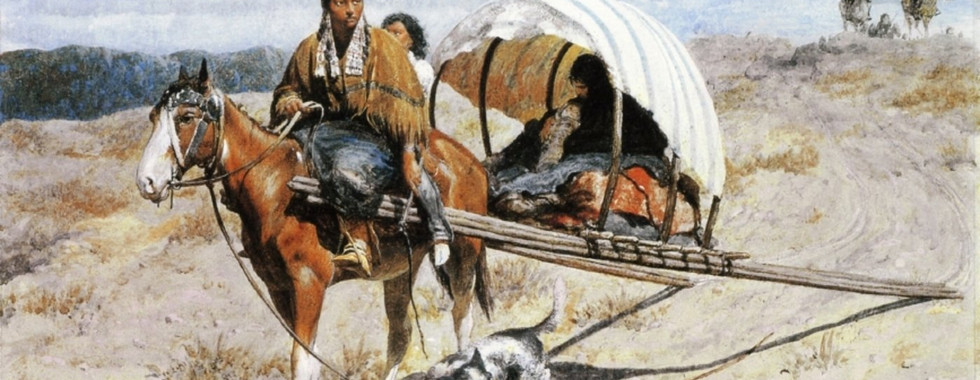Valentine
- Matthew Kerns

- Feb 14, 2020
- 4 min read
Valentine Walter Bromley was born to be an artist. He learned his craft from his father, Walter Bromley III, a talented engraver turned painter whose art was displayed in England at Suffolk Street, The Royal Academy, and the British Institution. Valentine's grandfather was William Bromley the Younger, a tint-engraver, and his great-grandfather was William Bromley the Elder, who provided engravings for Thomas Macklin's Bible, Thomas Stothard's History of England, and who worked on the Elgin Marbles from the Parthenon at the British Museum.

Valentine became an associate of the Royal Institute of Painters in Water Colours at the age of 19, and a few years later an associate of the Society of British Artists. He also submitted work to the Illustrated London News. "Val," as Bromley was often called, won widespread acclaim in 1872 and 1873, receiving favorable commentary and prestige for paintings at exhibitions across England. He was married in the spring of 1873. In April of 1874, Valentine's wife passed away suddenly. She was only twenty years old. A month later, Valentine boarded a boat bound across the Atlantic for America. Windham Thomas Wyndham-Quin, 4th Earl of Dunraven and Mount-Earl, was familiar with Valentine's work, and invited him to chronicle his 1874 trip to America and the new Yellowstone Park. Val joined the Earl, his good friend and personal physician Dr. George Kingsley, a highland hunter named Campbell, Captain Charles Wynne (Dunraven's cousin), Fred Bottler, a rancher who lived just north of Yellowstone's Mammoth Springs, Dunraven's cook and valet Maxwell, and Tweed, the Earl's favorite hunting dog. Their guide for the trip was Texas Jack Omohundro.
Texas Jack and Dunraven first met in the spring of 1872 when the Earl and Dr. Kingsley hunted buffalo with Jack in Nebraska, and explored Estes Park in Colorado, much of which Dunraven would eventually own. For their Yellowstone trip, Texas Jack met the others in Denver before heading to Salt Lake City to procure supplies for the long trek. In Montana, the group encountered members of the Crow and Bannock tribes. Bromley was fascinated. He sketched many of their encounters, later turning some of his sketches into paintings for Dunraven or etchings for The Illustrated London News.


Inside the Park, Bromley sketched geysers and landscapes, but he also sketched the adventures of the party:

This etching, included in Dunraven's 1876 book The Great Divide, shows the troupe making camp. Texas Jack is depicted removing the Indian saddle from a horse, wearing fringed buckskins, his revolver and bowie knife tucked in his belt.

Mule Packing shows the struggle to pack all of their provision on the mule team they used to carry supplies. Bromley includes himself in this one, standing on the left and helping Texas Jack, who is cinching the girth strap under the mule. To the right, cook Maxwell rushes to assist Doctor Kingsley with a particularly unruly mule.

Making the Best of It shows the entourage trying to stay warm and dry on a wet autumn night in Yellowstone Park. Dunraven's book describes these moments:
"[Texas] Jack, who is of course also smoking—he always is smoking, except when he is eating, and the few minutes he is obliged to devote to mastication are grudgingly given—is holding forth to the rest of us, telling us some thrilling tale of cattle raids away down by the Rio Grande on the Mexican frontier; graphically describing some wild scurry with the Comanches on the plains of Texas; or making us laugh over some utterly absurd story narrated in that comical language and with that quaint dry humour which are peculiar to the American nation. Bottler is lying on his stomach, toasting on a willow-wand a final fragment of meat...he is greatly relishing Jack's story, except when some not over-complimentary allusion to the Yankees comes in; for Bottler served in the Federal Army during the great Civil War, while Jack, Virginian born and raised in Texas, naturally went in for the Southern side."

This piece, printed in the Illustrated London News and titled Indians In Sight, shows one of the wagons from their trek. Texas Jack stands in the rear, a watchful eye on the horizon to determine if the warriors spotted in the distance are friendly or not. The 1874 trip with Dunraven successfully avoided hostile encounters. Jack's 1877 trek wouldn't prove as lucky. That year, Nez Perce fled through the park to avoid the pursuing Army, attacking several parties of tourists.
After returning home at the end of his trek through the Yellowstone with Texas Jack, Bromley submitted several of the paintings he made from sketches on the journey to various galleries and exhibitions. His painting Big Chief's Toilet won a gold medal at the Crystal Palace Exhibition of 1877. Sadly, Bromley died in April of that year. He was thirty years old. His paintings can today be found at Adare Manor in County Limerick, Ireland, the former seat of the Earl of Dunraven and Mount-Earl. They are also in the Anschutz Collection of the American Museum of Western Art in Denver, Colorado, the British Museum in London, and Museums Sheffield.




























Comments